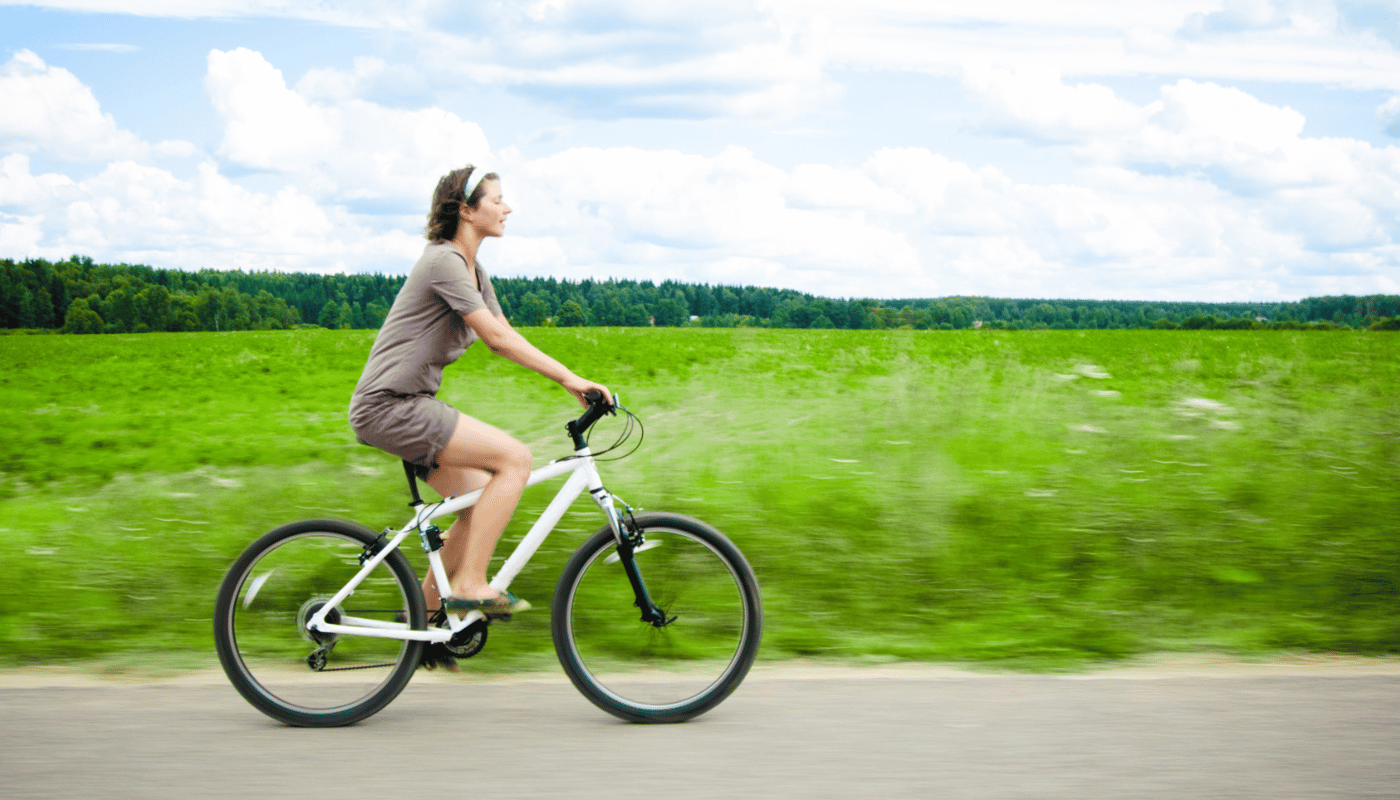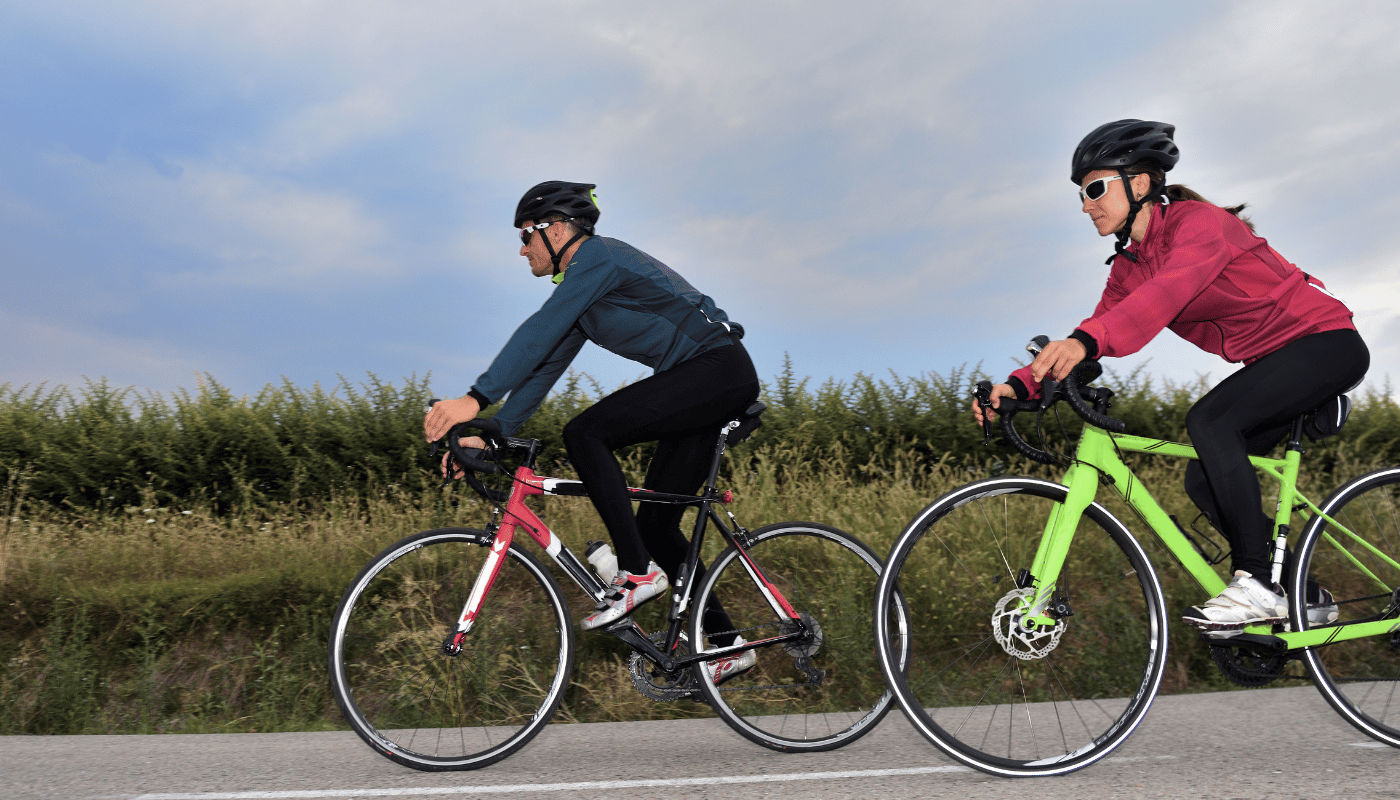Scoliosis, a condition characterized by an abnormal curvature of the spine, affects individuals of all ages. While some cases are mild and require minimal intervention, others may necessitate ongoing treatment or lifestyle adjustments to manage symptoms. A critical aspect of managing scoliosis is choosing suitable physical activities that promote overall health without aggravating the condition.
Exercise is crucial in improving posture, strengthening core muscles, and enhancing flexibility\u2014all factors contributing to better spinal health. However, not all forms of exercise are equally beneficial for individuals with scoliosis. Activities that place excessive strain on the back or require repetitive twisting motions can exacerbate symptoms or lead to discomfort. This makes it essential for individuals with scoliosis to evaluate their exercise options carefully.
Cycling, a low-impact activity, has garnered attention as a potential exercise for scoliosis management. Unlike high-impact sports that place significant pressure on the joints, cycling offers a gentler alternative that may provide both physical and mental health benefits. Additionally, the adjustable nature of cycling\u2014, from the type of bike to the intensity of the ride\u2014allows individuals to tailor the activity to their specific needs and comfort levels.
For individuals managing scoliosis, the question often arises: “is cycling good for scoliosis?” Exploring this topic requires understanding how cycling interacts with spinal health and its potential advantages and limitations. By considering factors like posture, bike setup, and duration of activity, cycling can become a valuable part of a scoliosis care routine.
Benefits of Cycling for Scoliosis Patients
For individuals managing scoliosis, finding the right physical activity is key to improving overall health while avoiding unnecessary strain on the spine. Cycling has emerged as an excellent option due to its low-impact nature and adaptability. Unlike activities that place excessive pressure on the back, cycling provides a controlled environment where intensity and duration can be tailored to individual needs.
One of the most significant advantages of cycling is its ability to improve cardiovascular health. Regular cycling helps increase heart rate and blood circulation, which is essential for maintaining overall fitness. Additionally, it strengthens muscles in the legs, hips, and lower back\u2014areas that are crucial for spinal support. These benefits make cycling an accessible and effective exercise for individuals with scoliosis who want to stay active without compromising their spinal health.
Benefits of Cycling for Scoliosis Patients:
- Low impact on joints and spine: Cycling minimizes stress on the spine compared to high-impact sports like running.
- Improves posture and balance: Maintaining proper form while cycling encourages good posture and enhances core stability.
- Strengthens key muscle groups: Cycling engages the lower back, abdominal, and pelvic muscles, which support the spine.
- Promotes cardiovascular fitness: Regular cycling contributes to improved heart health and endurance.
- Customizable intensity: The adjustable nature of cycling allows for gradual progression and adaptation to individual comfort levels.
These benefits demonstrate why cycling can be valuable to a scoliosis care routine. Individuals with scoliosis can enjoy better posture, increased mobility, and improved overall well-being by engaging in an activity that strengthens key muscles without overstressing the spine. Cycling also offers psychological benefits, such as reducing stress and improving mental clarity, which are especially important for those dealing with chronic conditions.
Often lies in how well the activity is adapted to individual needs. Cycling can become a safe and effective exercise option by combining proper bike setup, posture awareness, and manageable intensity.
Potential Risks and Limitations of Cycling
While cycling offers many benefits for individuals with scoliosis, it is essential to recognize potential risks and limitations to ensure the activity is both safe and effective. One of the primary concerns is improper posture while riding. Maintaining a hunched or awkward position on the bike can place undue stress on the spine, potentially exacerbating scoliosis symptoms. To mitigate this, individuals should keep their back straight, and shoulders relaxed while cycling.
Another critical factor is bike setup. A poorly adjusted bike\u2014with a seat that is too high, handlebars too low, or an improper frame size\u2014can lead to discomfort and misalignment of the spine. Consulting a professional to ensure proper bike fitting can help prevent such issues. For example, adjusting the seat height to allow for a slight bend in the knees while pedaling can improve overall comfort and reduce strain on the lower back.
Overexertion is another potential drawback. Long rides without adequate breaks may cause fatigue in the muscles that support the spine, increasing the risk of discomfort or injury. Individuals with scoliosis must begin with shorter rides, gradually increasing duration and intensity as their endurance improves. Regular rest breaks during cycling sessions can also help prevent overuse injuries.
Individuals with scoliosis should prioritize preparation and mindfulness while cycling to address these challenges. Wearing supportive footwear, using ergonomic bike accessories, and performing pre- and post-ride stretches can significantly enhance the experience and reduce potential risks.
When considering “is cycling good for scoliosis,” it is clear that the activity can be beneficial when approached thoughtfully. By recognizing potential pitfalls and taking steps to address them, cycling can remain a low-impact, spine-friendly exercise option for individuals with scoliosis.
Comparing Cycling with Other Exercises for Scoliosis
When managing scoliosis, choosing physical activities that align with the condition’s specific requirements is essential. Exercises like swimming, yoga, walking, and cycling are often recommended because of their potential to strengthen muscles, improve flexibility, and enhance overall well-being. However, each activity has unique benefits and limitations, making it vital for individuals to evaluate the most suitable for their needs.
The table below outlines a comparison of these exercises, focusing on their advantages and disadvantages for individuals with scoliosis
| Exercise | Benefits | Limitations |
| Cycling | Low impact, strengthens core muscles | Risk of poor posture if the bike is improperly adjusted |
| Swimming | Decompresses the spine, full-body workout | Requires access to a pool; some strokes may strain the back |
| Yoga | Improves flexibility and posture | Certain poses may be unsuitable for scoliosis |
| Walking | Low intensity, easy to perform daily | It may not provide enough muscle strengthening for spinal support |
As shown in the table, cycling is a versatile and accessible exercise. Its low-impact nature reduces the risk of spinal strain, making it particularly suitable for individuals with scoliosis who may need to avoid high-impact activities like running. Unlike swimming, which requires access to specific facilities, cycling can be done almost anywhere, offering greater convenience.
While excellent for improving posture and flexibility, yoga demands careful pose selection to avoid spinal compression or overstretching. Although gentle and easy to incorporate walking into daily routines, it might not offer the same cardiovascular or muscle-strengthening benefits as cycling.
By focusing on proper posture and bike setup, cycling can combine the benefits of strength building, cardiovascular improvement, and accessibility, making it a valuable option in a scoliosis management plan.
How to Start Cycling Safely with Scoliosis
For individuals with scoliosis, starting a new exercise like cycling requires careful planning and consideration to ensure safety and effectiveness. A key first step is consulting a healthcare professional, such as a physical therapist or doctor, who can assess the individual’s spinal condition and provide tailored recommendations. This ensures the exercise is appropriate and minimizes the risk of aggravating scoliosis symptoms.
Proper bike setup is critical for maintaining comfort and avoiding unnecessary strain on the back. The seat height should be adjusted so the legs are slightly bent at the bottom of each pedal stroke, allowing for smooth and efficient movement. Handlebars should be positioned to encourage an upright posture, avoiding excessive forward leaning that can pressure the spine. Choosing a bike with adjustable features, such as seat angle and handlebar height, further enhances customization for individual needs.
Posture while cycling also plays a vital role in preventing discomfort and promoting spinal health. Riders should keep their backs straight and shoulders relaxed, avoiding a hunched or stiff position. Engaging the core muscles while cycling can provide additional support to the spine, reducing strain on the lower back. For added stability, individuals may consider using ergonomic cycling accessories like padded seats or handlebar grips.
Starting slow is essential for building endurance and minimizing the risk of overuse injuries. Beginners with scoliosis should begin with short, low-intensity rides, gradually increasing the duration and intensity over time. Regular breaks during cycling sessions help prevent muscle fatigue and allow for posture adjustments as needed.
By following these guidelines, individuals with scoliosis can safely enjoy the benefits of cycling. For those wondering what “is cycling good for scoliosis,” a thoughtful approach to preparation and technique ensures that the activity contributes positively to overall health and spinal support.
Tips for Safe and Effective Cycling with Scoliosis
Maximizing the benefits of cycling for scoliosis involves adopting strategies that promote safety and effectiveness. By following a structured approach, individuals can ensure that cycling becomes a positive and sustainable part of their scoliosis care routine. Below are some key tips to keep in mind for those with scoliosis who wish to cycle safely and effectively.
Tips for Safe Cycling with Scoliosis:
- Maintain proper posture: Always keep your back straight and shoulders relaxed to avoid unnecessary spinal strain.
- Adjust your bike setup: Ensure the seat and handlebars are positioned to support an upright posture and minimize discomfort.
- Start with shorter rides: Begin with low-intensity sessions to build endurance gradually and prevent overexertion.
- Incorporate stretching routines: Perform stretches before and after cycling to improve flexibility and reduce tension.
- Monitor your body’s signals: Pay close attention to any signs of discomfort or pain and make necessary adjustments.
Maintaining proper posture is one of the most important aspects of cycling with scoliosis. Poor posture can exacerbate spinal imbalances, so riders should focus on engaging their core muscles to provide extra support. Practicing posture awareness during cycling sessions can significantly reduce strain on the lower back.
Adjusting the bike setup is another essential step. A properly fitted bike minimizes the risk of discomfort and allows for a smoother riding experience. For example, setting the seat height so that your knees are slightly bent at the bottom of each pedal stroke ensures optimal alignment and reduces pressure on the spine. Similarly, handlebars should encourage a natural, upright posture, preventing the rider from leaning too far forward.
Starting with shorter rides helps build confidence and endurance without overwhelming the muscles that support the spine. Gradual progression in intensity and duration ensures that the body adapts to the activity over time. Combining cycling with a regular stretching routine also enhances flexibility and prepares the body for the physical demands of cycling. Stretching the hamstrings, lower back, and hip flexors can improve mobility and reduce post-ride stiffness.
Listening to your body’s signals is crucial. Any persistent discomfort or pain should not be ignored, as it may indicate the need for adjustments in technique or equipment. A healthcare professional can provide additional guidance and help tailor the cycling routine to your needs.
By implementing these tips, individuals with scoliosis can turn cycling into a safe and beneficial exercise. For those asking, “is cycling good for scoliosis,” following these strategies can ensure that the activity supports spinal health and overall well-being.
Conclusion
Cycling offers a unique combination of benefits, making it an appealing exercise option for individuals with scoliosis. Its low-impact nature, combined with the ability to customize intensity and duration, provides a safe and effective way to improve cardiovascular health, strengthen core muscles, and enhance posture. For many, cycling is a form of exercise and a way to improve mental well-being and reduce stress.
However, as with any physical activity, cycling has risks and limitations, particularly for scoliosis patients. Improper posture, poor bike setup, or overexertion can lead to discomfort or aggravate existing symptoms. Taking a cautious approach by consulting healthcare professionals and ensuring proper preparation can help mitigate these risks. A correctly adjusted bike, regular stretching, and gradual progression in cycling intensity are essential for creating a safe and sustainable routine.
When comparing cycling to other activities like swimming, yoga, and walking, its versatility and accessibility stand out. Unlike swimming, which requires access to a pool, or yoga, which demands careful pose selection, cycling allows for more flexibility in location and intensity. This adaptability makes cycling a practical choice for individuals with scoliosis looking to incorporate exercise into their lives.
Ultimately, the answer to “is cycling good for scoliosis” depends on how the activity is approached and tailored to individual needs. By recognizing its benefits while addressing potential challenges, cycling can become a valuable tool in managing scoliosis. The key lies in personalization: listening to one’s body, consulting experts, and prioritizing comfort and safety.
For those with scoliosis, cycling is more than just a means of staying active\u2014it is an opportunity to enhance overall well-being and take positive steps toward managing their condition. With the right approach, cycling can support spinal health and empower individuals to lead healthier, more active lives.



